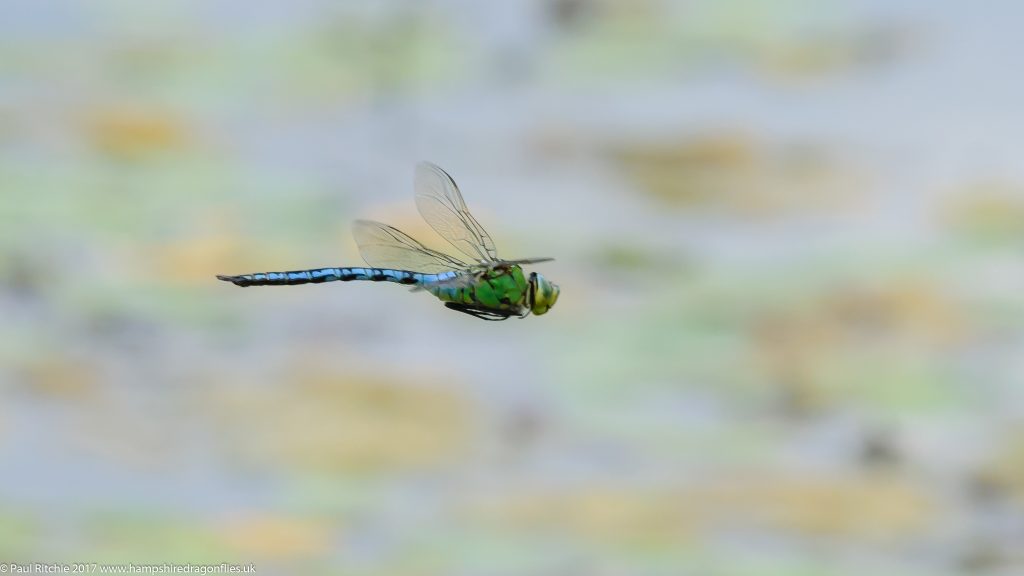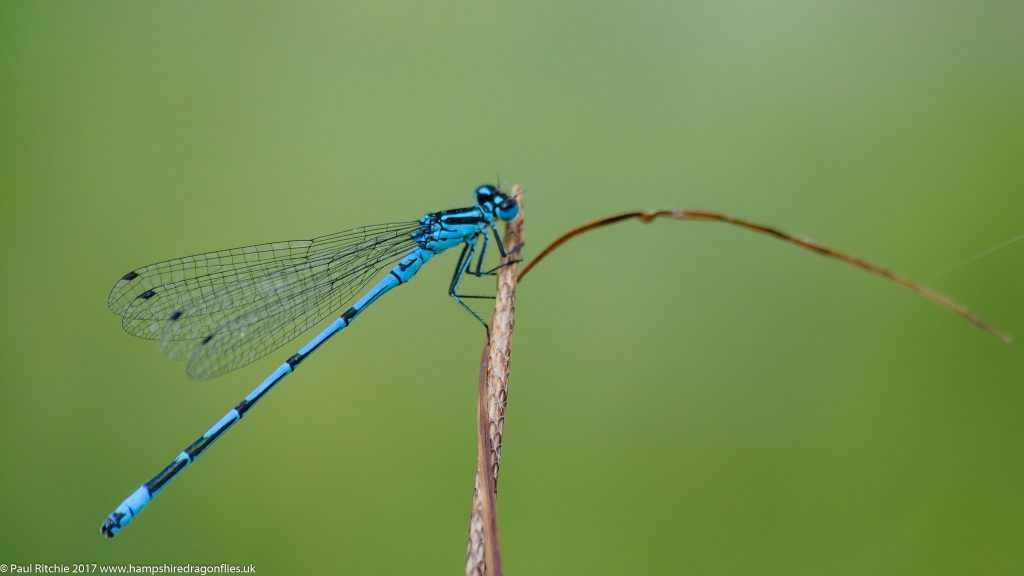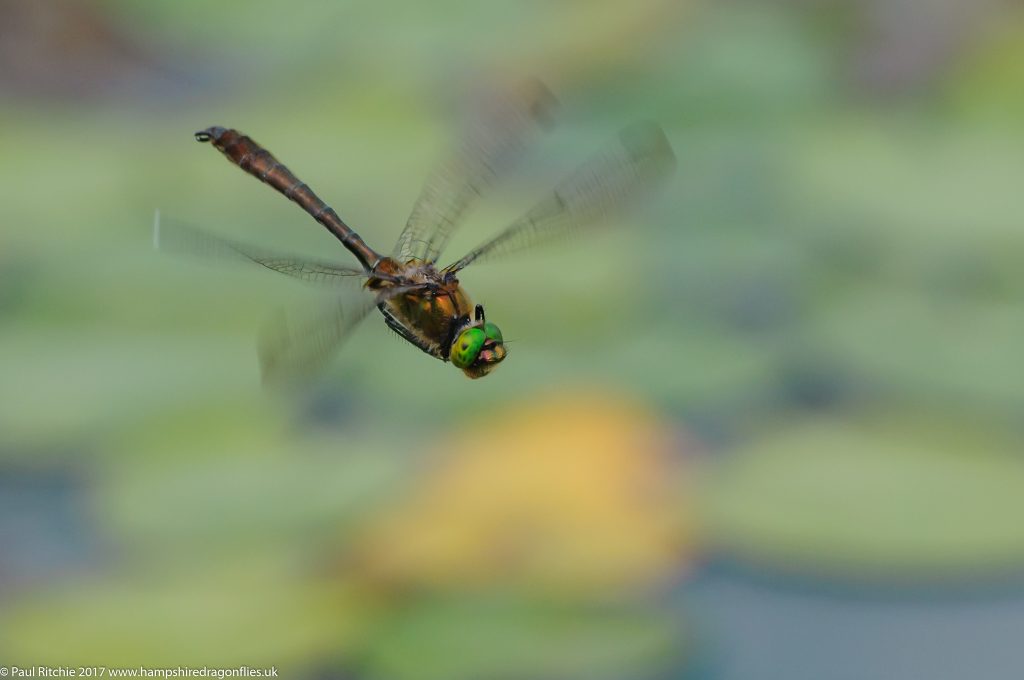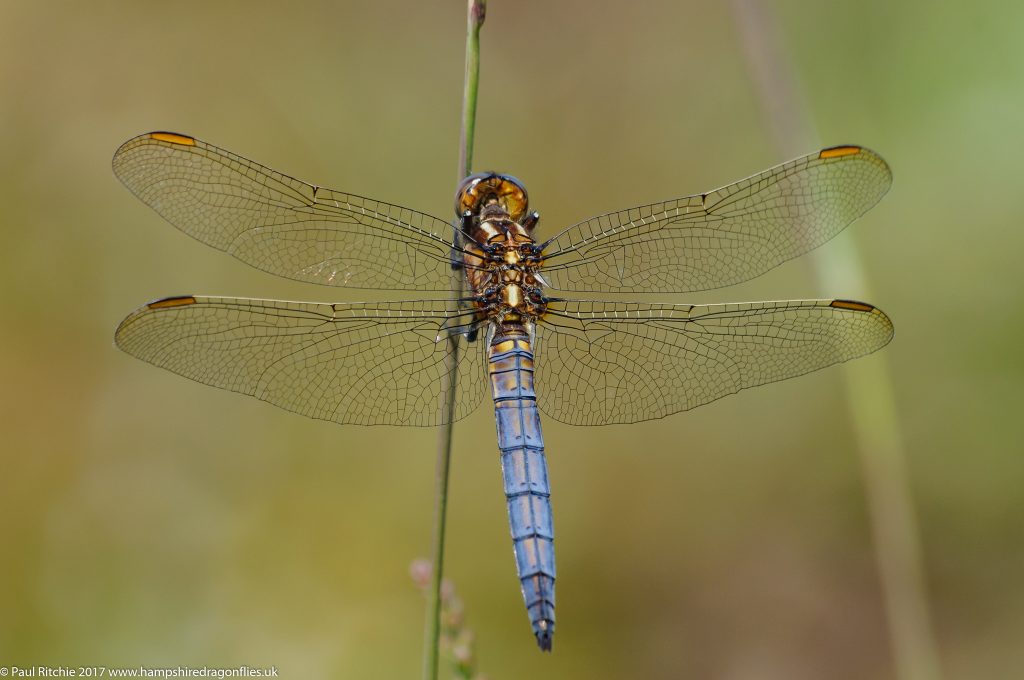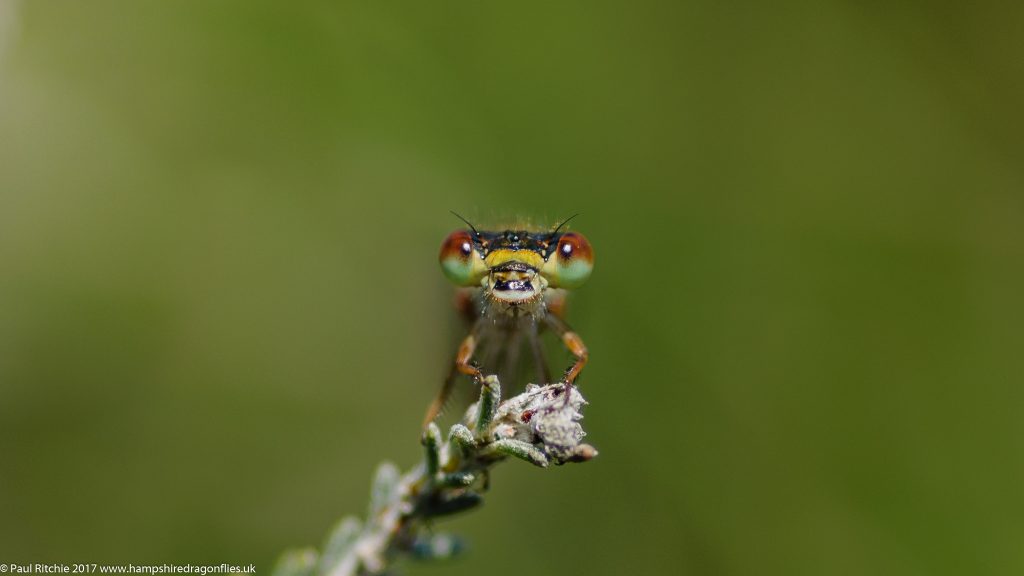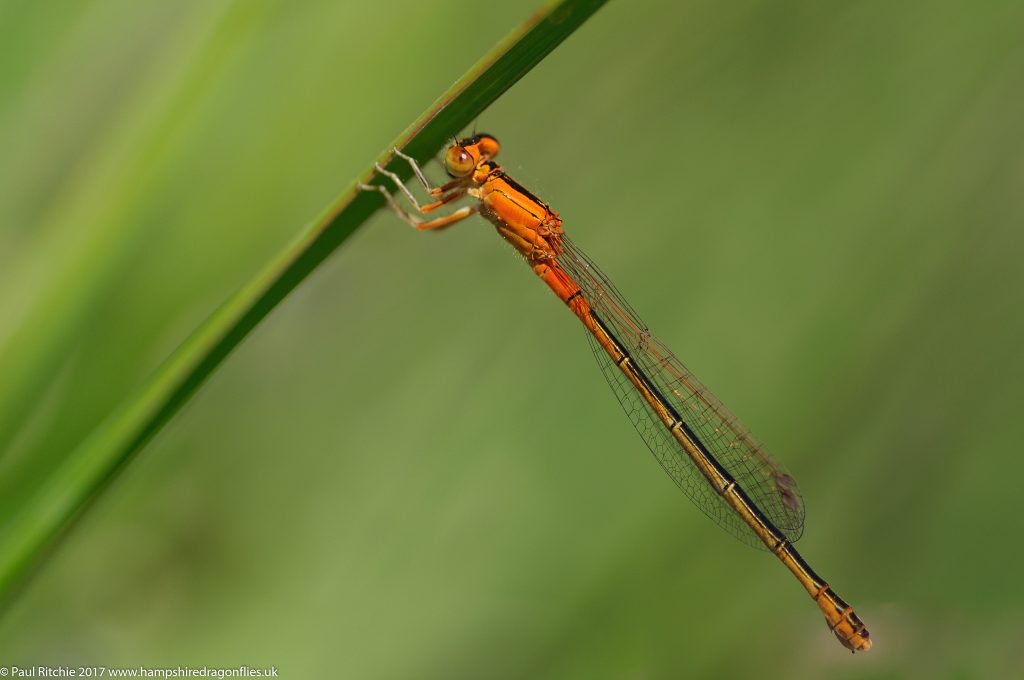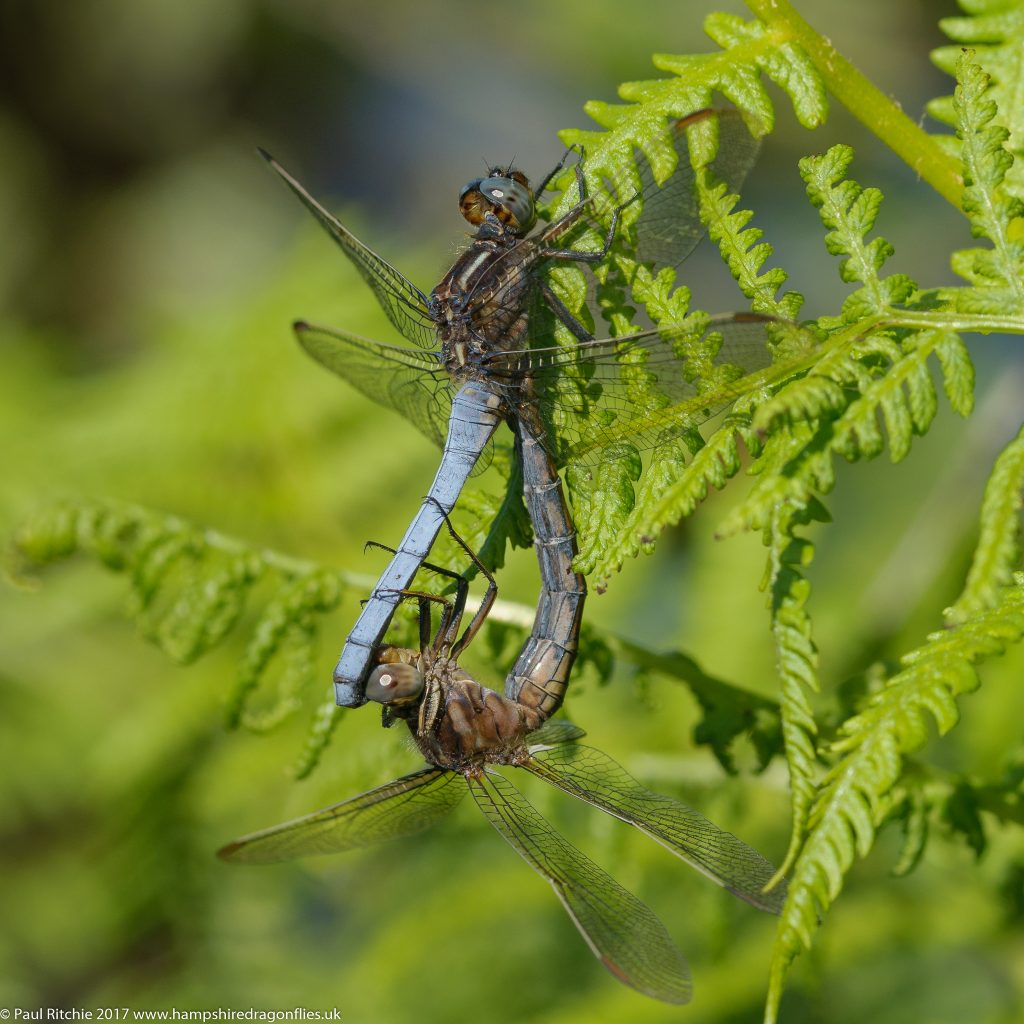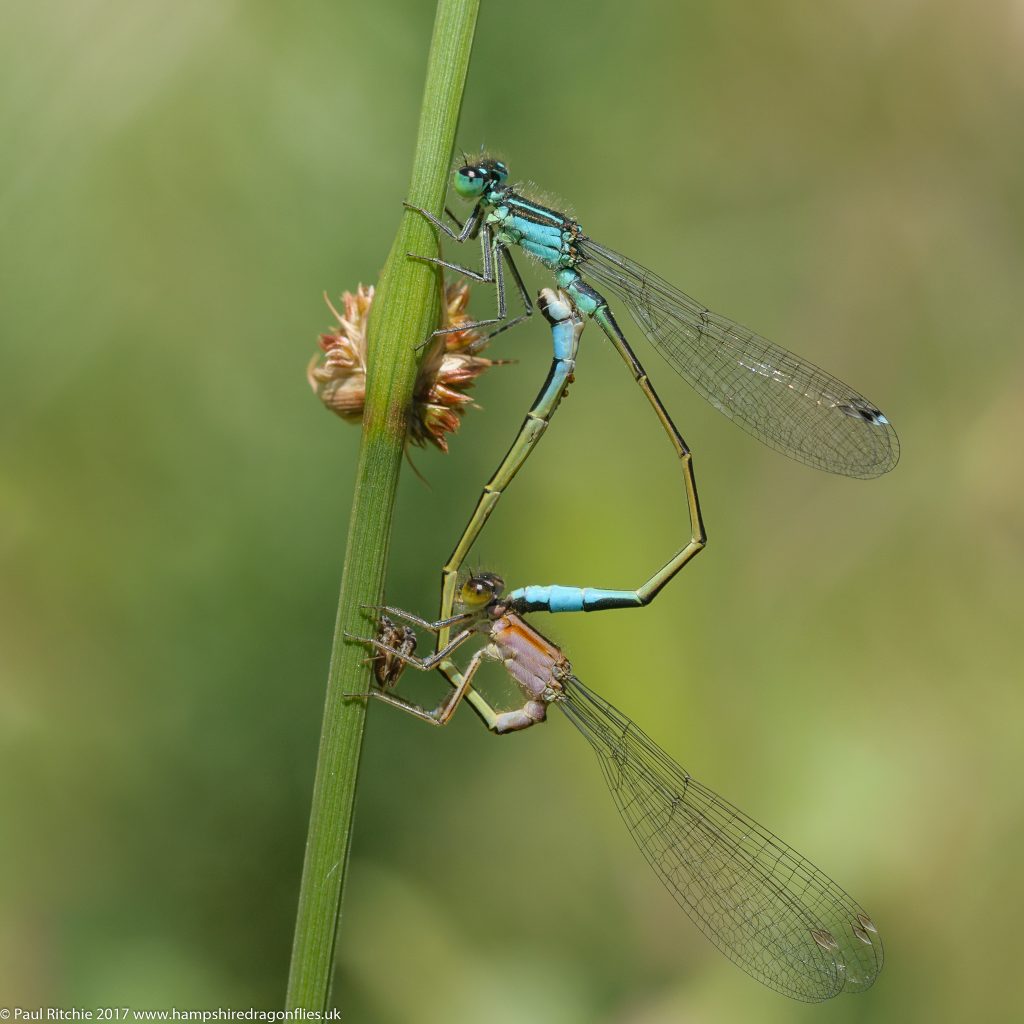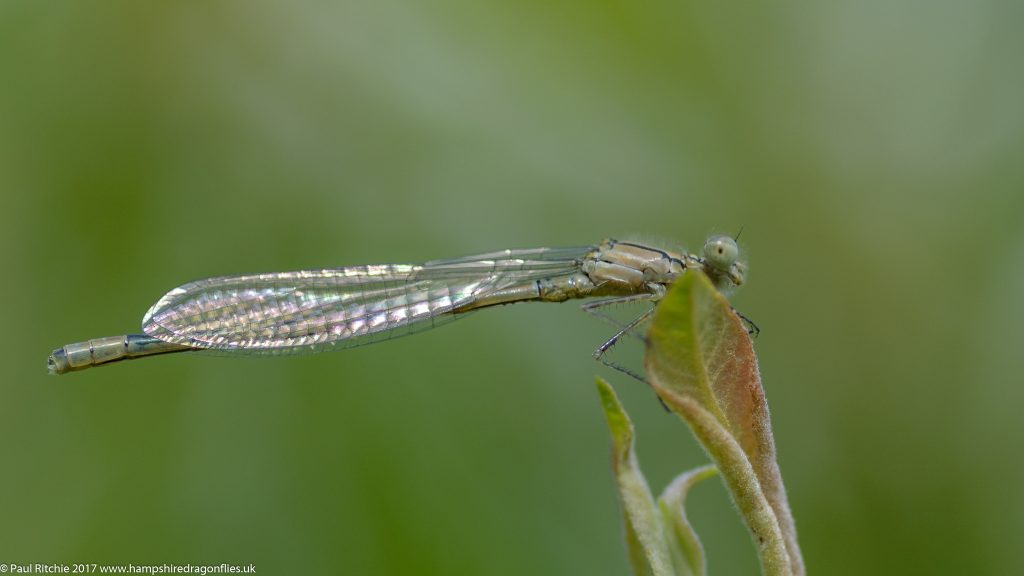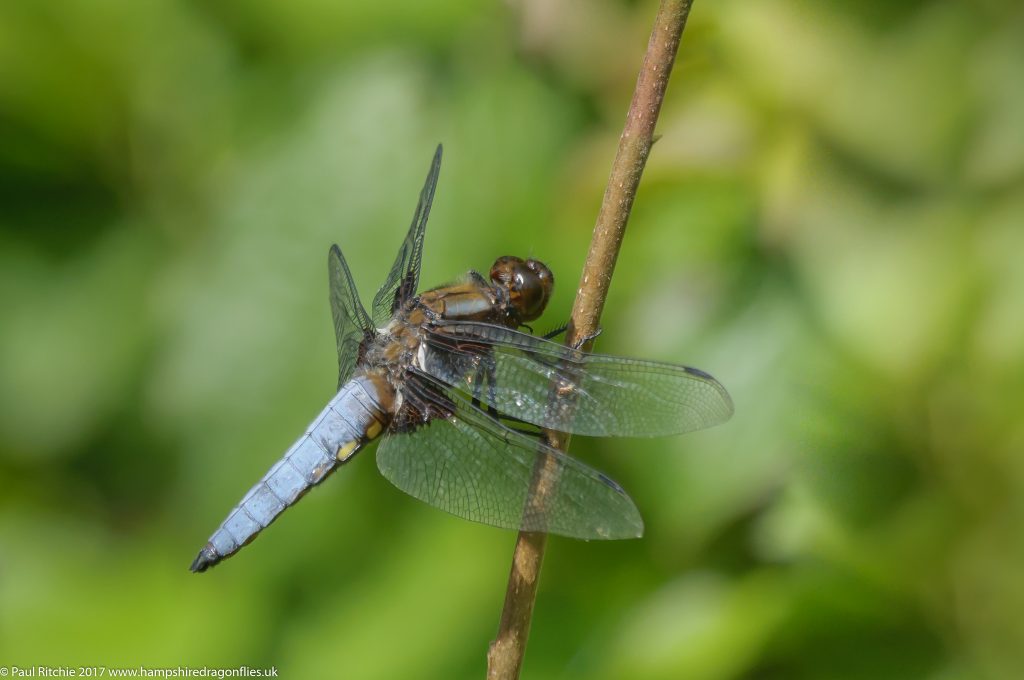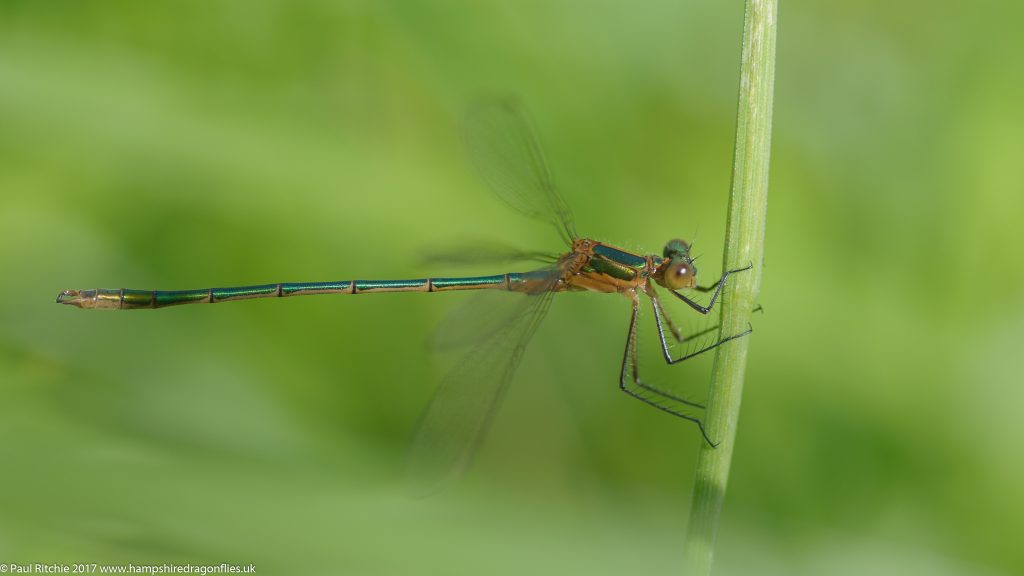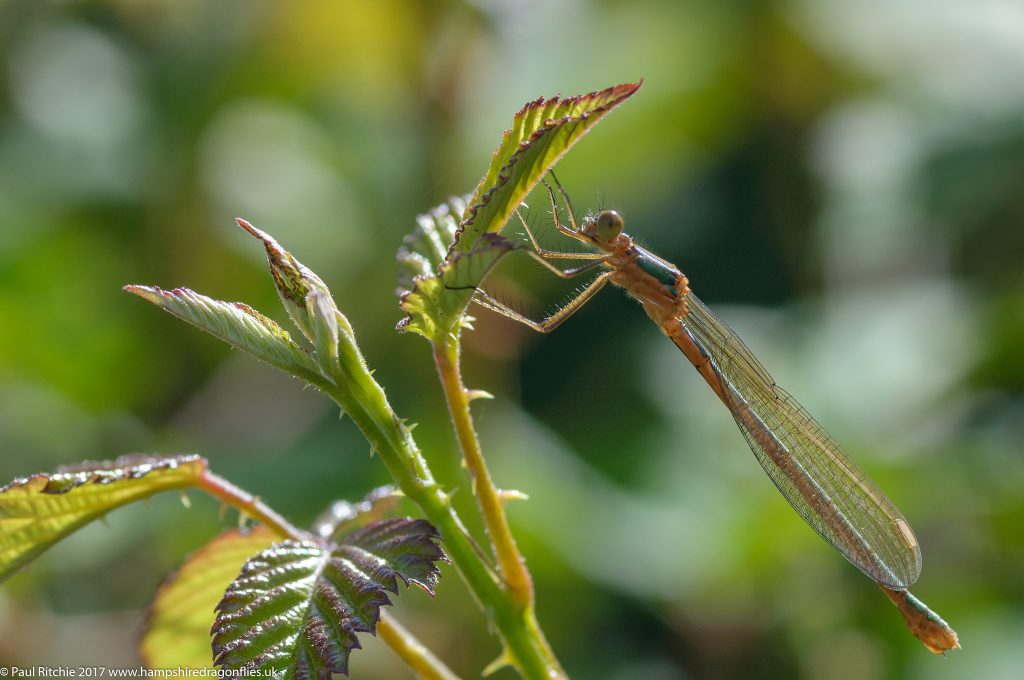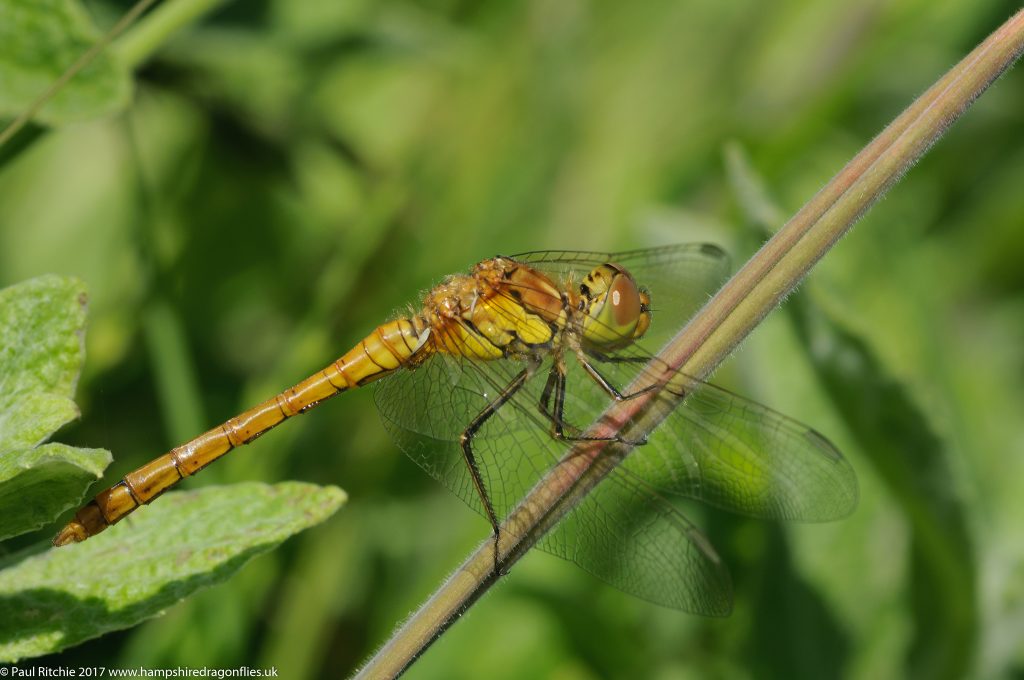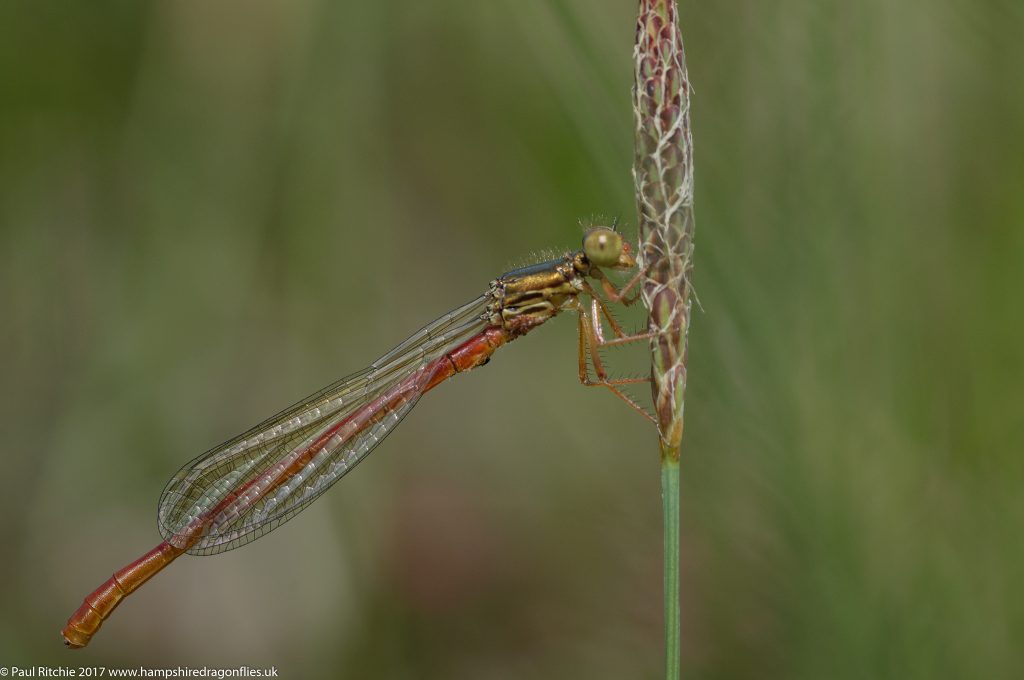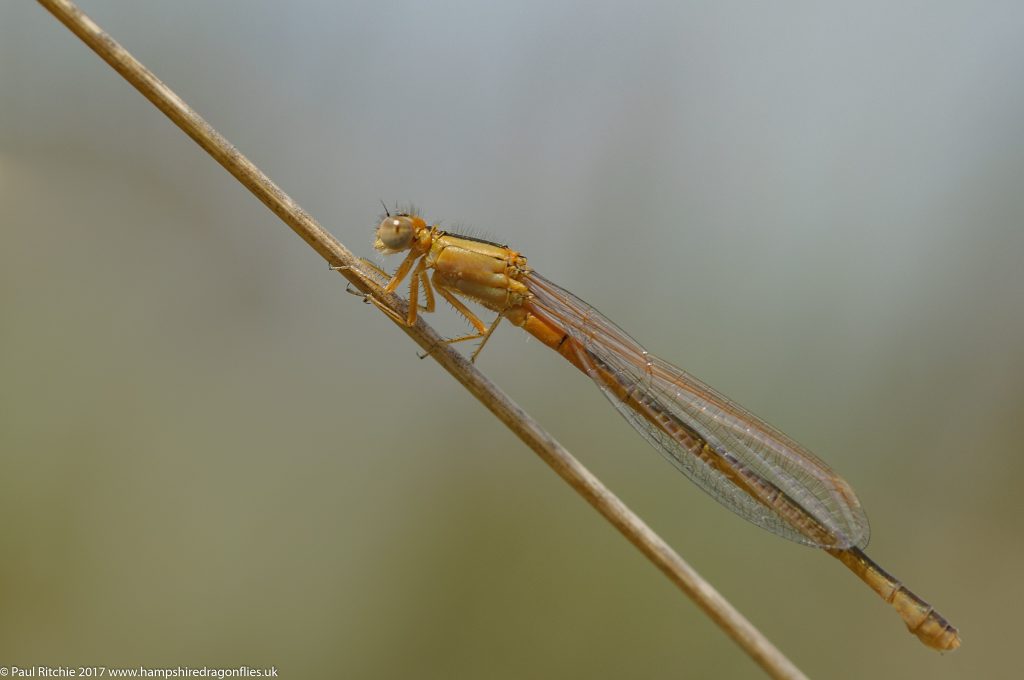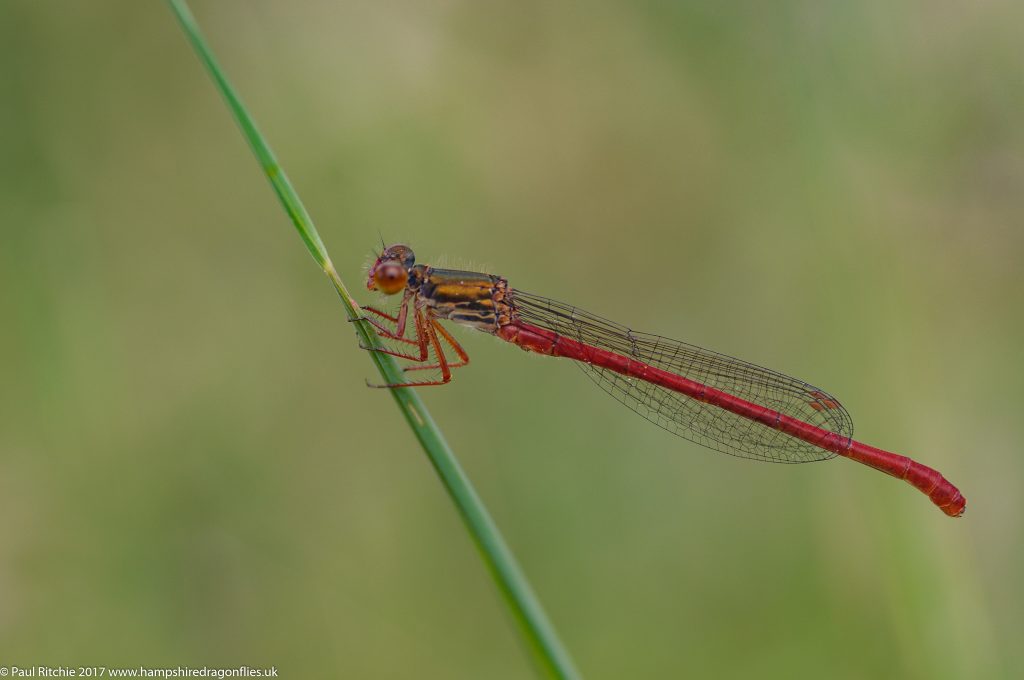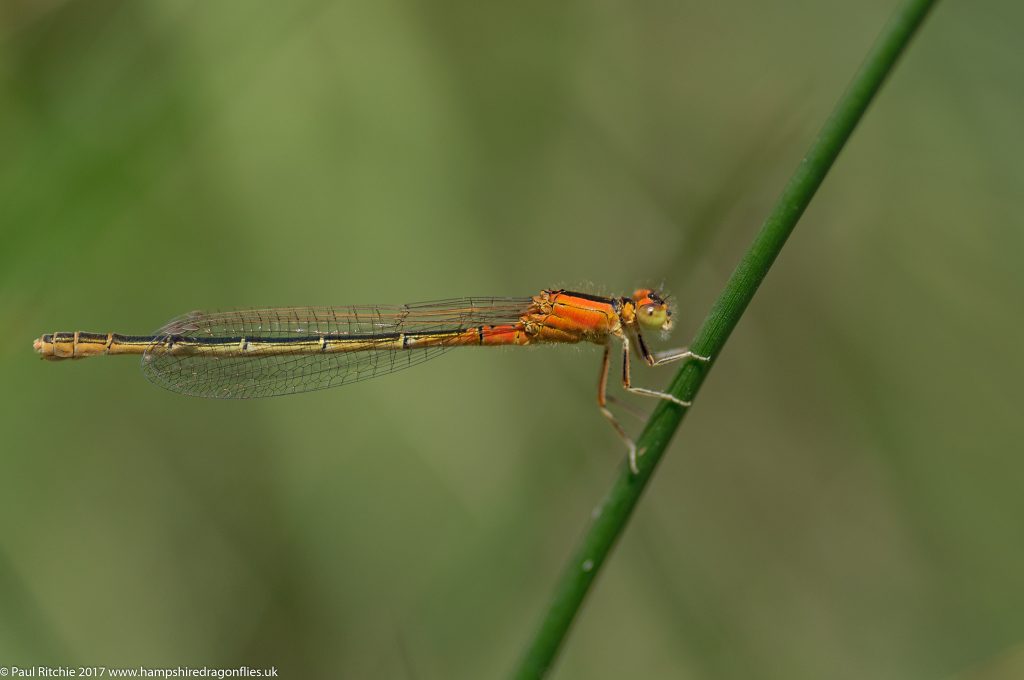Monday 19th June
Being only able to get out at weekends is all very well, but I needed some solitude to ease back into it properly. A chance to go at my own pace and indulge when necessary, scramble through scrub, stand up to my knees in cool water and walk great distances if the need arises.
Relying on my sight alone might mean I miss some chances, but what I don’t know doesn’t bother me. A usual look first thing at the ponds provided a number of Four-spotted and Broad-bodied Chasers, a couple of Emperor and the usual supporting cast of damsels.
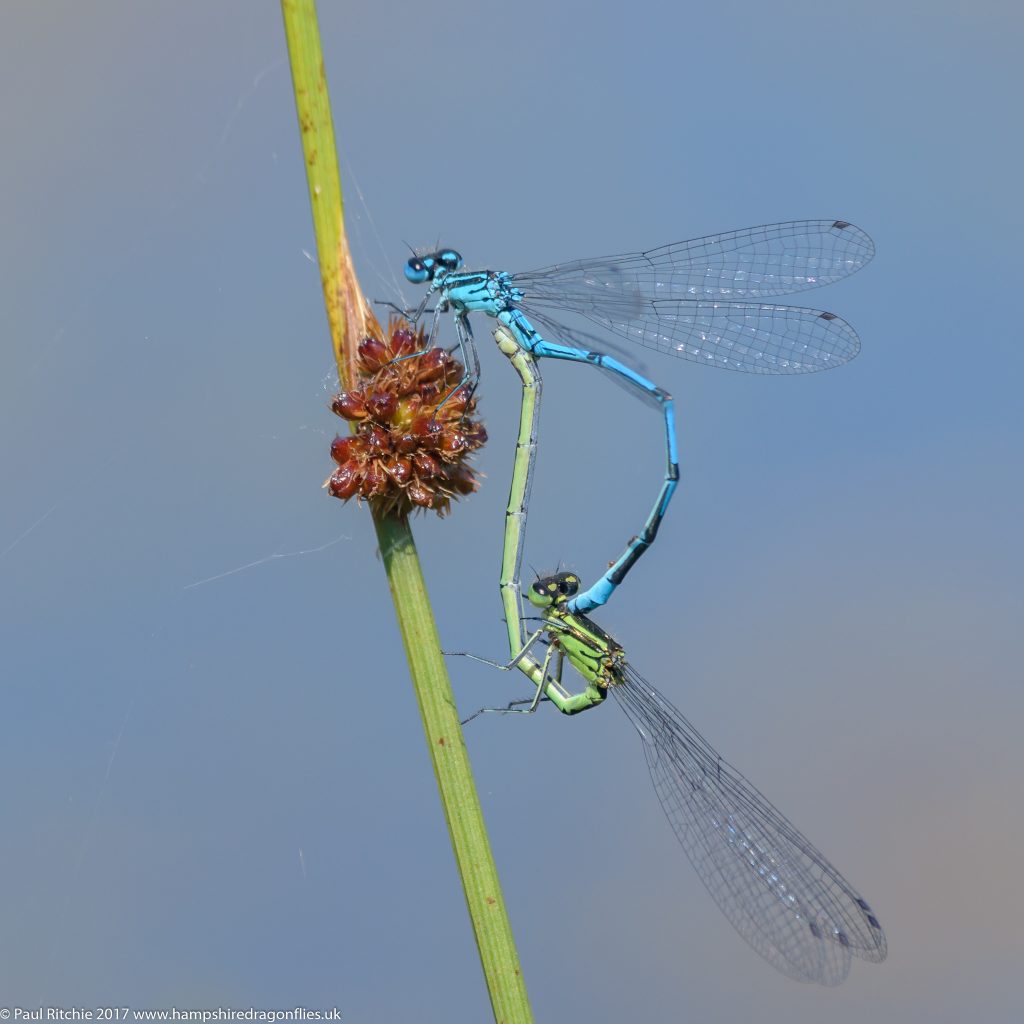
Taking the short route through the hedge to Long Lake I saw my first Brown Hawker of the season flying tantalisingly over the reeds so I got to work, knowing full well that this would be a challenge.
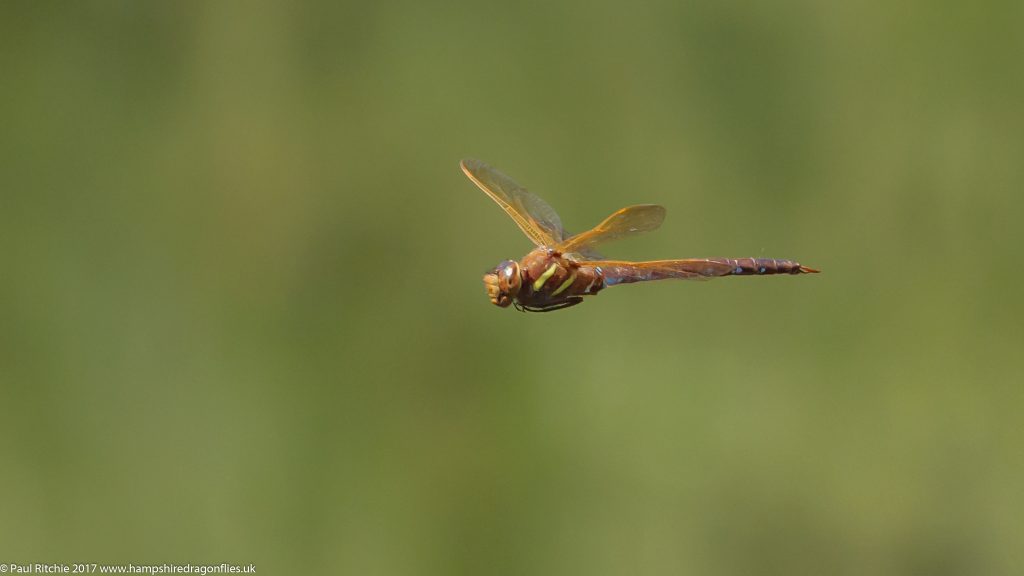
I wasn’t convinced I had him in the bag, so finding another at the other end of the lake I decided to remain a while. Just me, a Brown Hawker and an Emperor filling the sky with their acrobatics and fisticuffs while Four-spotted Chasers and a large sprinkling of resident damselflies frolicked over the shallows. This is what it’s all about; just watching the show.

Once I’d had my moment of mindfulness I took a walk to scratch an itch; I wanted to find the pond where I’d been informed a population of Small Red were present. I’ve seen them at Warren Heath but not here, until today.
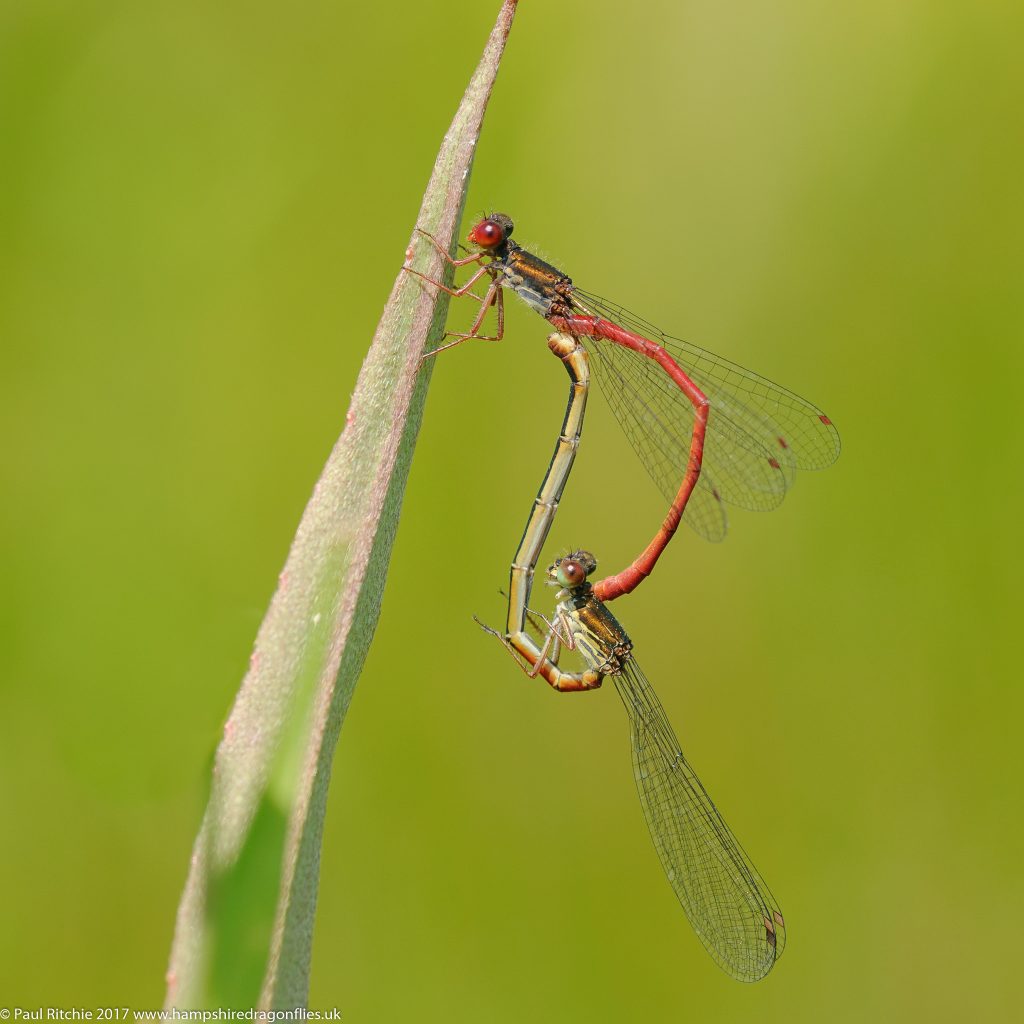
Shattered from the walk and the humid heat, I had a long walk back to the car and obviously missed a more direct route, finding myself along a path which looked familiar; I’d been here last year on one of my famous wanders.
Had I not taken a wrong turn I wouldn’t have experienced a magic moment. Hawking along the path ahead of me turned about and flew around me twice giving me a perfect view of a female Brilliant Emerald! Unmistakable with her long, protruding ovipositor.
What a result! A ‘lifer’ moment. It would’ve been nice to grab a photo naturally, but she didn’t stay around for one. Such a fleeting glimpse, but time stopped for that moment. I waited around just in case she might reappear, and reluctantly moved on, passing the pond which I had a hunch was the breeding pond for this species.
I made another navigational error on familiar paths, which somewhat fatefully provided me with two other sightings; both male and magnificent in their metallic beauty as they hawked along the rides close to the junction of Wellbeck Lane.
I was exhausted, but elated. Despite the lack of photos it had been a truly wondrous day, with two new species added to the yearly count and a lifer moment with what I’m beginning to think is my real favourite UK dragonfly.




